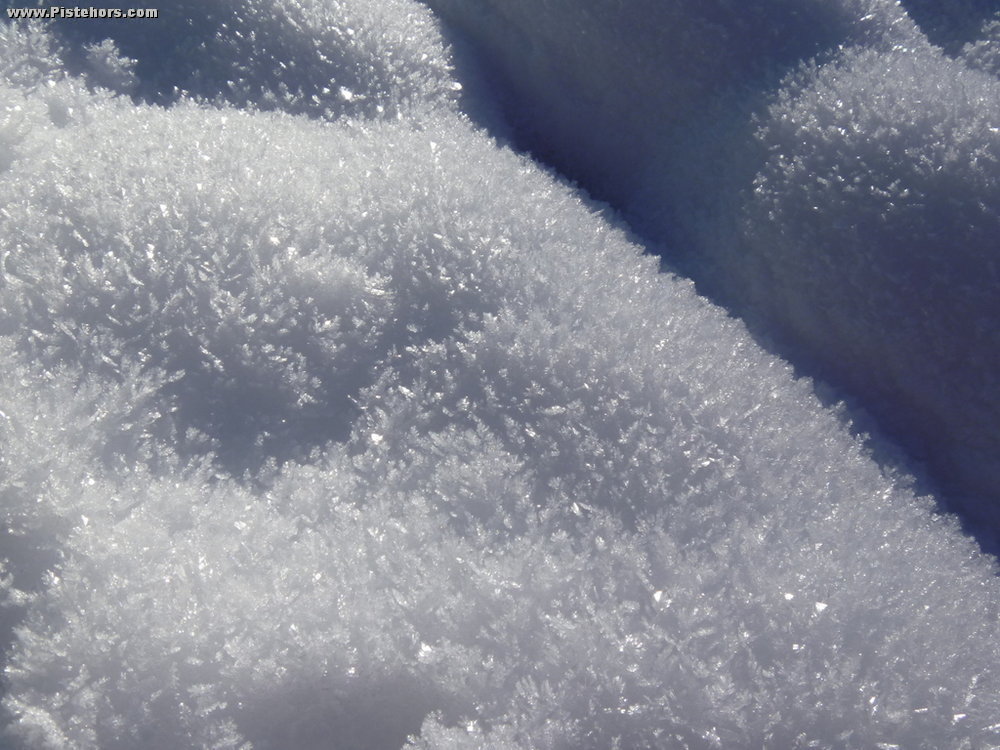One thing you couldn't fail to miss today in the Belledonne Mountains were copious quantities of surface hoar crystals on any shaded slopes and between 1200 - 2000 meters, maybe higher but that is as far as I climbed. With new snow expected Saturday in mid-altitudes this could create an unstable situation with the return of good weather on Sunday.
Surface hoar crystals form in mid-altitudes when it is cold. Avalanche expert Bruce Tremper says it is "the trickiest weak layer on the planet and accounts for the majority of avalanche victims". It is persistent and very sensitive to load and can produce slides on even quite mild slopes. During cold clear mountain nights the snow surface radiates an enormous amount of energy and becomes very cold. Water vapour from the warm air just above the snow surface condenses.
As it needs clear air it doesn't grow under trees. Ski down through the woods and into a clearing and bam - the slope avalanches. It can be destroyed by strong winds so you often get very random distribution leading to spatial variability. That is, a snow pit in one location may not show any weak layers.
The cold and surface temperature gradients have also destructed the top layer of the snow-pack. There are between 10-30cm of facetted crystals on North Sector slopes. This facetting process is pretty interesting as it can turn hard crusts into powder (often called loud powder due to the noise it makes when skied). It has certainly transformed last week's heavy powder into something much more skiable.
Altogether the snowpack is shaping up to be more complicated than last year. The thin cover below 2000m and intense cold in the last week of November has created strong temperature gradients which are weakening the snowpack. Take note of how much snow falls on Saturday, with the cold it will mainly be in the 500-2500 meter range and note wind directions. Take great care when the sun comes out.
